Since Hens and Chicks are resilient, stressful signs are rarely visible. But constant negligence will result in various problems. Shriveling leaves is one of them. What are the reasons precisely behind shriveling leaves in Hens and Chicks? Let’s find out.
The lower leaves of Hens and Chicks will shrivel and die as they grow over time, and it is a natural process. Other than this, some problems in their care regime like inadequate watering, extreme temperature, and a pest infestation can also lead to shriveling of the leaves.
Hens and Chicks don’t die so quickly. Even if they are stressed, they will bounce back. But if their leaves are shriveling, it means you have taken them for granted due to their tolerable feature.
In this article, I will explain some probable causes behind shriveled leaves and fix them. We will also give you some care tips for prevention.
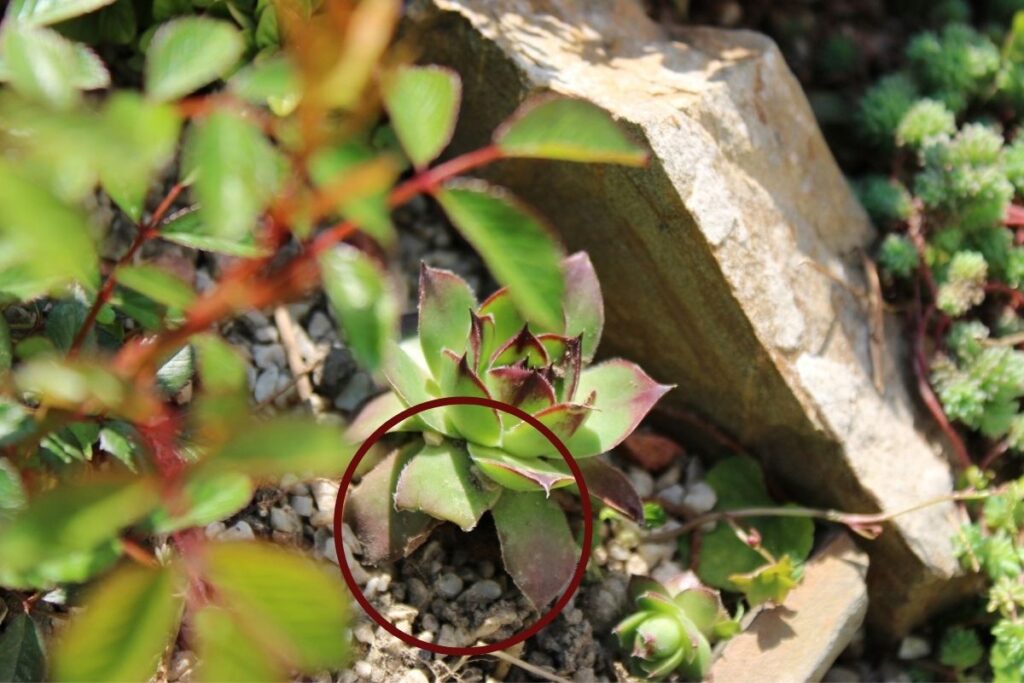
Why are my Hens and Chicks shriveling?
There are a few reasons behind shriveling leaves in Hens and Chicks:
- Old and aged leaves
- Underwatering
- Poor soil/too much moisture
- Winter season
- Low light issues
All the above causes are responsible for shriveled leaves.
But only shriveling is not a sign of one particular problem.
The plant will show other signs depending on the problem.
You can quickly identify the real problem behind shriveled leaves by observing those signs.
Let’s discuss the issues one by one.
Aging
Shriveling leaves due to aging is typical in Hens and Chicks.
As the plant grows over time, its leaves will shrivel, turn brown, and die.
These succulents keep growing new leaves.
As they grow new leaves, some old leaves die.
It happens mainly with those varieties that have lots of outer leaves.
They continue to grow new leaves and kill the old ones.
In the process, they become yellow, wrinkled, and then brown and eventually die.
This natural process has no fixation.
You will find that the bottom leaves are shriveled and dry.
You can permanently remove those dead leaves.
It will allow the plant to breathe.
Don’t worry, as the plant will grow more new leaves to fill up the space.
Also read: Are Hens And Chicks Annual Or Perennial?
Underwatering
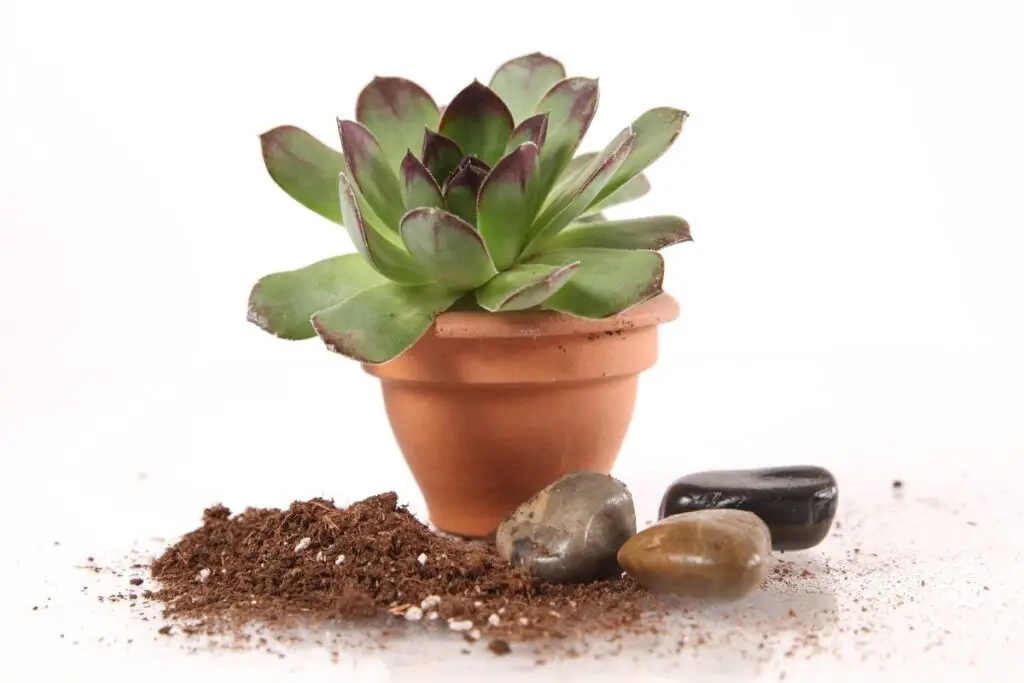
This is another common reason behind shriveling leaves after aging.
Succulents can indeed tolerate dry conditions, but you shouldn’t extend their period of thirst.
All the succulents store water in their leaves and stems, and thus they can stay without water for some days.
Most people take their succulents for granted due to this reason and don’t water them.
As a result, the leaves get dry and shrivel.
Eventually, the Hens and Chicks will require watering.
The bottoms leaves shrivel first.
When you don’t water the plant for a long time, the upper leaves absorb water from the lower leaves.
That is why the lower leaves show signs first.
The bottom leaves will die, and again new leaves will grow.
Those leaves, too, will shrivel due to a lack of water.
If you continue overlooking the plant, all the leaves will gradually shrivel up.
Other signs include:
- Yellow and dry leaves.
- Later on, the yellow will turn brown.
- The leaves will become crispy and crippled.
- The soil will be dry and hard.
How to fix underwatering?
Fixing underwatering in Hens and Chicks is very easy than overwatering.
Give your plant a good drink.
After some days, they will bounce back to good health.
All their shriveling will be gone, and the leaves will look plump again.
Water your Hens and chicks whenever the top 1-2 inches of the soil dries up to prevent such conditions.
It means once a week regularly, especially during the spring and summer.
Sometimes people deliberately keep them thirsty to bring their actual colors.
But the gap between watering should not be more than 14-15 days.
Also read: How Much Water Do Hens And Chicks Need? (Underwatering+Overwatering)
Looking for gardening supplies? We have tested 100's of products before recommending them to you guys. Check out our best pick below:
| Image | Gardening Supplies | Best Price? |
|---|---|---|
 Top
Top Top
Top | Raised Garden Bed Kit | Check On Amazon |
 | XLUX Soil Moisture Meter, Plant Water Monitor, Soil Hygrometer Sensor for Gardening, Farming, Indoor and Outdoor Plants, No Batteries Required | No Results |
 Top
Top Top
Top | 82 Pcs Garden Tools Set and Extra Succulent Tools Set | Check On Amazon |
 | Joeys Garden Expandable Garden Hose with 8 Function Hose Nozzle, Lightweight Anti-Kink Flexible Garden Hoses, Extra Strength Fabric with Double Latex Core, (50 FT, Black) | No Results |
 Top
Top Top
Top | Dual Chamber Compost Tumbler | Check On Amazon |
 Top
Top Top
Top | Sunnyglade Plant Stakes | Check On Amazon |
 Top
Top Top
Top | Organic Cold Pressed Neem Seed Oil | Check On Amazon |
 Top
Top Top
Top | Mighty Mint Gallon :-Insect and Pest Control Peppermint Oil | Check On Amazon |
 Top
Top Top
Top | Scotts DiseaseEx Lawn Fungicide | Check On Amazon |
 Top
Top Top
Top | Jacks Classic 20-20-20 All Purpose Fertilizer | Check On Amazon |
 Top
Top Top
Top | 30,000 Seeds Pollinator Attracting Wildflower Mixture | Check On Amazon |
 Top
Top Top
Top | Survival Vegetable Seeds Garden Kit-Over 16,000 Seeds | Check On Amazon |
Too much moisture or poor soil
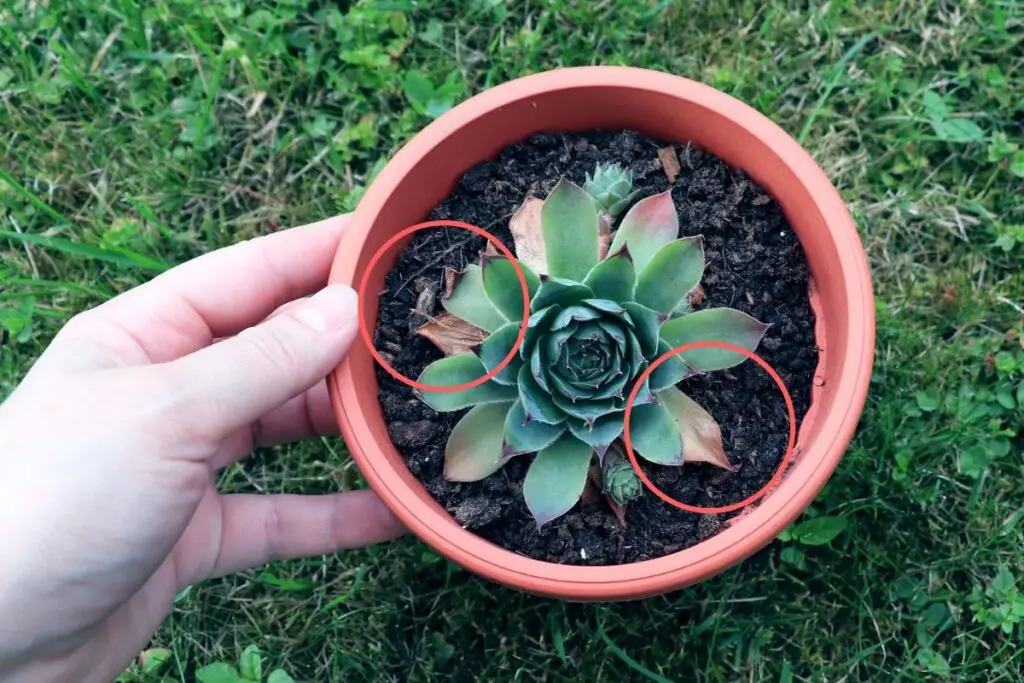
Shriveling of the leaves will also happen due to excessive moisture or poor drainage.
When you overwater the Hens and Chicks, or the soil doesn’t drain water enough, the leaves will shrivel due to it.
You can find this example in yourself.
Sometimes, our fingertips get shriveled or wrinkled when they stay in water for a long time.
Similarly, the plant leaves too will get shriveled due to excessive moisture.
The succulents already store moisture in their leaves.
You don’t have to water them daily or 2-3 times a week.
Too much water will not only cause overwatering but will also result in root rot.
Another reason for shriveling leaves due to excessive moisture is poor soil.
The soil you use for the Hens and Chicks must be well-drained.
The roots have developed to undergo dry conditions.
If they don’t experience a dry environment, they will not function well.
The roots start to rot if the soil remains damp for long.
When the roots start rotting, the plant will not get enough water and have a dehydrated and shriveled look.
Don’t get confused with underwatering.
Other signs of overwatering and root rot are:
- Yellow and soft, mushy leaves.
- Shriveled leaves due to too much dampness.
- Damp soil.
- Leaves fall off when touched.
- The leaves will turn dark brown, indicating rotting.
- In root rot, the plant base releases a foul smell.
How to fix the problem?
If there is too much moisture, stop watering for some days and wait to let the soil dry.
The plant will look healthy after some days.
Water only when the first 2 inches of the soil is dry.
Allow the soil to dry before you water the plant again.
Use well-drained soil.
Mix gritty ingredients like sand, perlite, gravel, or pumice to improve the soil’s drainage.
Let them have enough sunlight.
It can help in the quick drying of the water.
During the winters, they stay dormant.
At that time, you can water them with extensive gaping.
Once a month will be enough.
Also read: Are Hens And Chicks A Succulent? (+Basic Care)
Sunburn
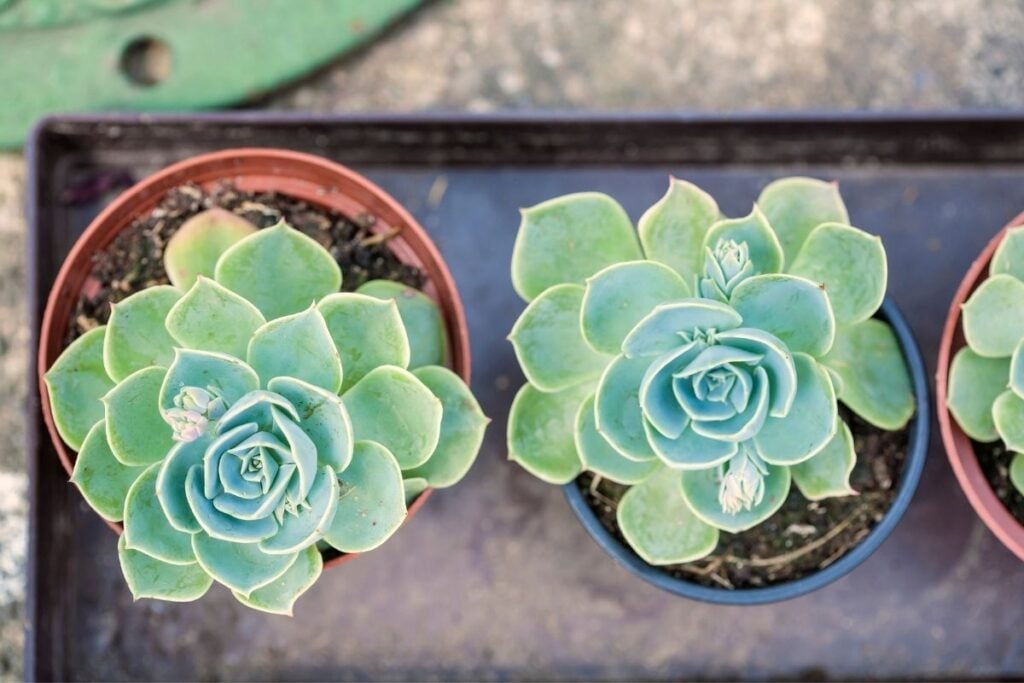
The following reason is sunburn.
It is more influential when your plant suffers sunburn with underwatering.
The leaves have a shriveled and withered look.
Indeed Hens and Chicks love to grow under the full sun.
But the sun shouldn’t be too punishing for them.
When you let the succulent sit under fully exposed harsh sun during the hardest summer days, the leaves start shriveling.
It happens because water dries up quickly due to an extended stay under the sun.
As a result, they face sunburn and a lack of moisture.
Symptoms include:
- Dry and shriveled look.
- The leaves will have brown burning signs.
- The leaves may turn yellow because of getting bleached with the harsh rays.
How to treat the problem?
When you see such signs, put on shading nets to filter the sunlight and decrease its intensity.
Water the plant more frequently.
It will make the leaves look normal and reduce the chances of sunburn.
Water when the sun intensity is less, i.e., in the morning and evening.
To prevent such conditions, do the above two things when the temperature increases and reaches 80°F.
Also read: Hens And Chicks Temperature Tolerance: (How Cold, How Hot?)
Low light conditions
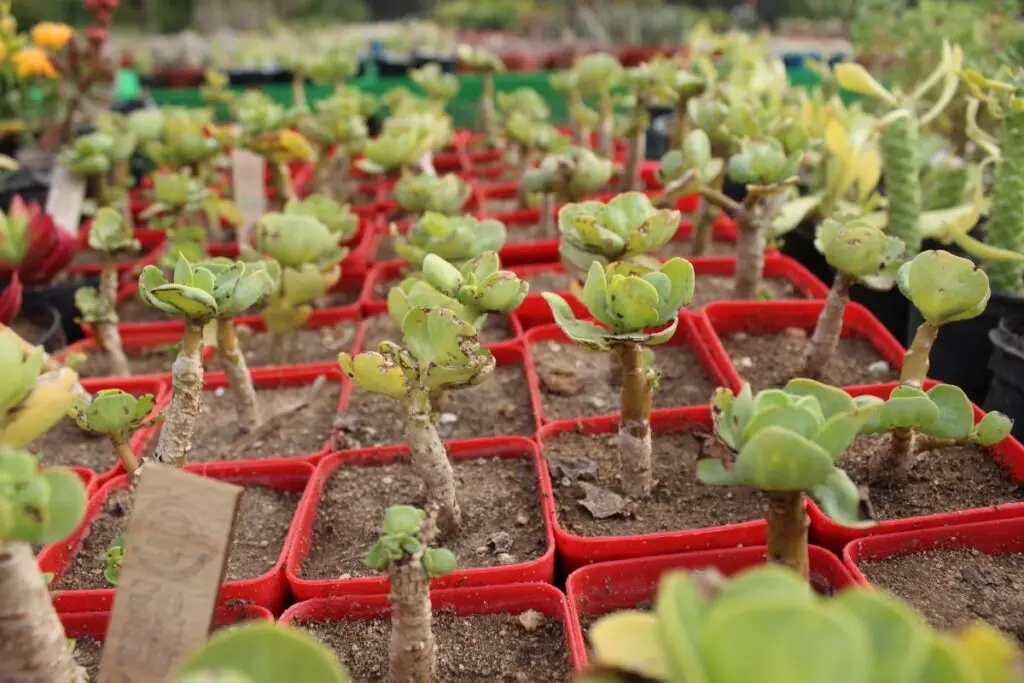
Generally, low light conditions are responsible for the rotting of the Hens and Chicks.
But, under low light, the plant will absorb water very slowly.
As a result, the plant will stay in moist conditions for a long time.
As I said earlier, excessive moisture will make the leaves shrivel.
Over time, the plant will have pale, wrinkled leaves, and it will start rotting.
That is why, indirectly, low light is another reason behind shriveled leaves.
How to fix low light conditions?
You have to transplant the Hens and Chicks to a sunny spot in your garden.
Look out for the southern or western directions for fully exposed sunlight.
If your variety is partial-sun tolerant, try the eastern directions.
It receives bright sunlight, which is slightly less intense than the other two directions.
Also read: How Much Sun Do Hen And Chicks Need? (Light Requirement)
Some essential care tips to keep the plant from shriveling
Shriveling leaves is a common problem like other problems like yellowing, browning, drying, and others.
Shriveled leaves are not the end of your plant.
It is a problem that can be solved by following proper treatment.
It does not kill your plant.
Understanding a few care tips will not only keep them healthy but will also prevent shriveling.
So without delay, let’s start.
Light
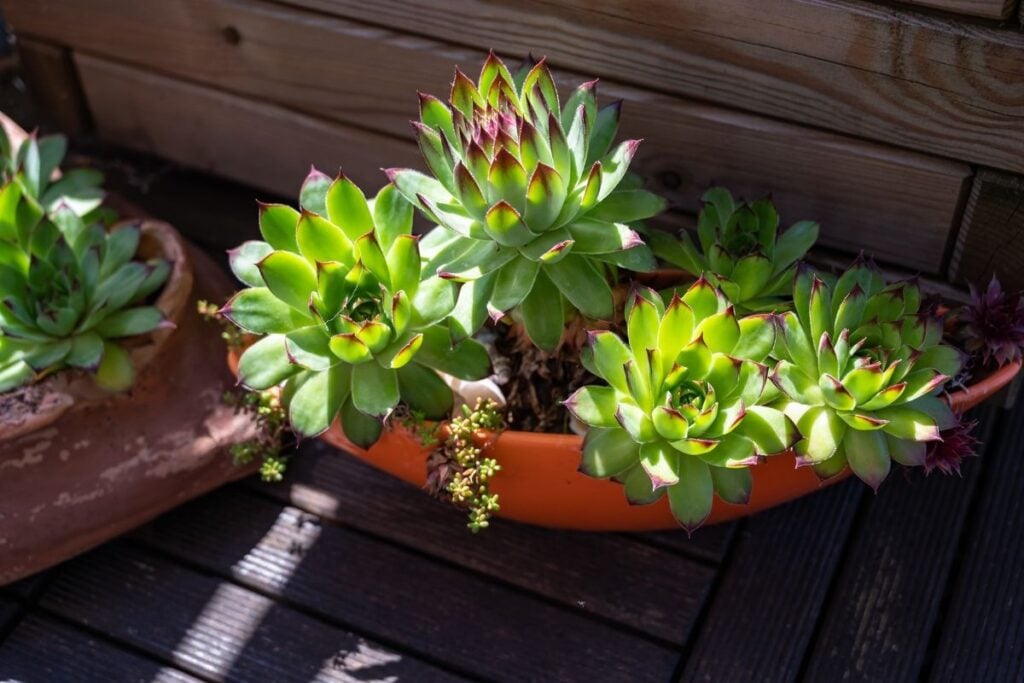
Place the Hens and Chicks at a spot where they can receive at least 6 to 8 hours of sunlight.
It can be direct or indirect, depending on the plant variety.
Do not deprive them of light.
Otherwise, the plant will take a lot of time to drink water from the leaves due to low light conditions, resulting in shriveled leaves.
Moreover, the plant will begin to rot if you let them stay under low light for an extended period.
If you think that the sunlight is too hard, fix shading nets to filter the sunlight.
It is expected during the harsh summer months, especially when the temperature reaches 80-90°F.
Water
Low water demand by Hens and Chicks doesn’t mean they will live without water for months.
Eventually, they will require water.
The leaves will become yellow, dry, and start shriveling without adequate water.
Shriveling is an obvious sign of dehydration.
So, you must water the leaves when the top 1 to 2 inches of the soil gets dry.
Water the Hens and chicks at least once a week during the spring and summer because they absorb and use lots of water and energy for proper functioning.
Let the soil dry before you water them. Else the Hens and chicks will experience overwatering.
Don’t water Hens and Chicks in the winters.
They stop their growth and switch on their survival mode, where they stay dormant.
As a result, they will require significantly less watering than other seasons.
Here, you can increase gapping between watering.
Always check the moisture level before watering.
It helps to understand the plant’s watering needs best.
Soil
Use well-drained soil for the Hens and Chicks.
If the soil fails to drain water appropriately, the plant will stay in excessively moist conditions, resulting in shriveling.
To avoid such conditions, use well-drained soil.
Dig up the planting site and mix 50% of sand into it.
You can also combine two parts sand or gravel and one part perlite or pumice with two parts of garden soil.
It supports excellent drainage.
For potted Hens and Chicks, you can use the above soil mix or only a commercial succulent mix.
Also read: What Kind Of Soil Do You Use For Hens And Chicks? (+Best Soil Mix)
Look out for bugs
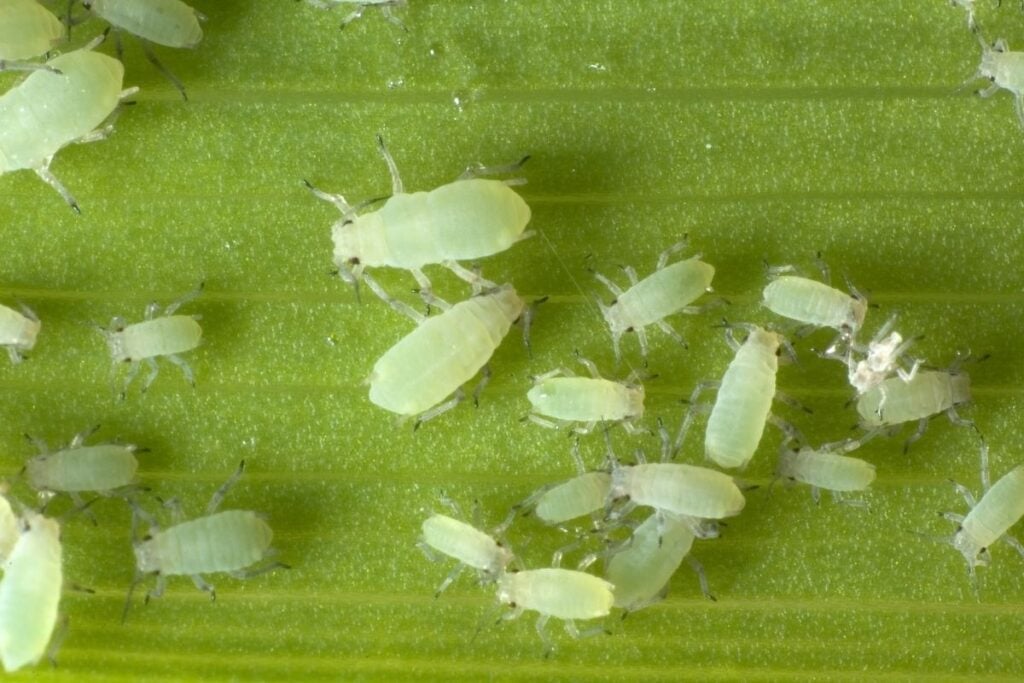
Sometimes, bug infestation may also cause shriveling of the leaves.
However, I have not experienced such a thing yet.
But it will hurt the plant, weaken them and make them vulnerable to diseases.
Observe your plant daily.
The moment you find any signs of damage by pests, treat it immediately.
Being hardy succulents, Hens and Chicks can bounce back soon.
Also read: Hens And Chicks Pests (Common Bugs+How To Get Rid)
Final thoughts
If you own Hens and Chicks and find shriveled leaves, try to inspect and check for the problems I discussed in this article. If you find any match, fix it as explained.
Your plant will revive back quickly without any trouble.
Most plants don’t survive when they face serious issues. Since Hens and Chicks are hardy succulents, they will come back and start growing and reproducing vigorously.
Should I remove the shriveled leaves?
If the leaves have only shriveled, you can let them stay.
With proper care and attention, they will turn plump and juicy.
But if the leaves are shriveling and dying due to aging, you can remove them. It will help your Hens and chicks breathe and allow the plant to grow new leaves.
Reference: Wikipedia, Iowa State University of Science and Technology, The University of Arkansas Division of Agriculture, NSDU, The Ohio State University, Missouri Botanical Garden.
